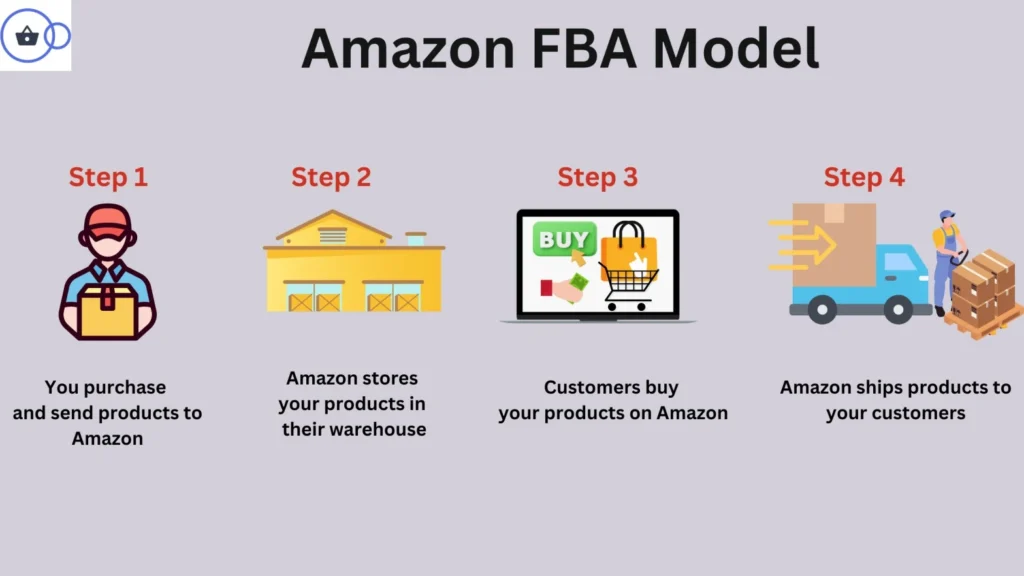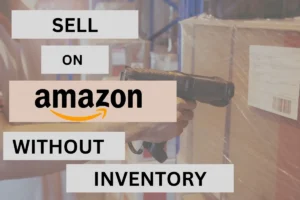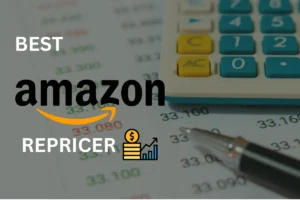Starting and running your own eCommerce platform isn’t easy. From managing numerous roles to maximizing your time, there’s a lot that goes into making sure your business is successful. One of the most imperative decisions you can make is how to fulfill the needs of your customers. If you’re working with Amazon, this choice is FBA vs FBM.
As an eCommerce business owner, you’re likely familiar with the formidable obstacles of success. Understanding and utilizing marketplaces, staying up to date on Amazon’s policies and regulations, managing inventory, shipping– the list goes on.
With so much to consider when setting up shop online, one of the first decisions you’ll have to make is Amazon FBA vs FBM. In other words, will you provide fulfillment by Amazon, or fulfillment by merchant (i.e. you)?
In this blog post, we’ll explore each option in depth, from cost considerations to inventory management capabilities. In doing so, we hope to provide you with the best choice for your unique eCommerce needs.
What is Amazon FBA?

Amazon FBA (Fulfilment by Amazon) is a shipment option for eCommerce markets. In this option, the task of storing and shipping a company’s product is given to Amazon. Due to storage costs and Amazon taking responsibility for the order, there is also a substantial upfront fee.
In exchange, Amazon will store and transport your product, all with their renowned brand name attached. Moreover, Amazon FBA comes with the potential for access to another service called Amazon SFP.
Amazon SFP
Seller Fulfilled Prime (SFP) allows professional sellers to deliver orders to customers faster than the standard shipping time. The program enables these sellers to display the “Prime” marker on their listings. This signifies that they offer same-day or two-day delivery with no additional fees.
To qualify, sellers must meet high standards in areas such as customer experience, order accuracy, and on-time delivery. With SFP, customers can get the products they want faster while also supporting small businesses.
Benefiting from this program can be a great way to boost your business and increase customer satisfaction. By becoming an SFP seller, you can give customers the convenience of faster delivery times while also boosting your profits. Plus, you’ll stay ahead of the competition, which offers slower shipping speeds.
Regardless of what you choose, using FBA in any capacity can be slightly complex without the right help. That’s where Ecom Circles comes in.
At Ecom Circles, our software helps sellers like you navigate Amazon’s ever-shifting terms and conditions to avoid account suspension.
Using our integrated platform to self-educate, boost your metrics, and monitor transactions, we give you everything you need for success!
Book a call with us today to learn more.
Amazon FBA Pros and Cons
Amazon FBA is a great way to streamline your online business, but there are some pros and cons to consider.
Pros
1. Increased Convenience
With Amazon FBA, you don’t have to worry about shipping orders yourself or managing inventory. This can save time and effort when it comes to managing your store. Plus, Amazon features built-in solutions for returns as well!
2. Faster Delivery Times
Customers will receive their products sooner, thanks to Amazon’s fulfillment network. Their logistics are able to efficiently move products from the warehouse to customers quickly and with relative safety.
3. Reduced Workload
Why worry about labeling items for shipment or finding reliable shippers when Amazon handles all of that for you? This includes reduced overhead costs from not having to manage your own warehouse or shipping processes. That means less money spent on operations and more spent on growth!
4. Brand Exposure
There’s nothing wrong with piggybacking on Amazon’s Prime eligibility if it means additional authority for your brand. What’s more, getting your products listed on Amazon’s marketplace will give your brand more visibility and potential customers.
Cons
1. Giving Up Control
By using FBA, you’re handing the reins of your company’s shipping protocols over to Amazon. This means that if you have some unique way of packaging or presentation, you’ll have to forego this. Moreover, your package will be at the mercy of Amazon warehouse staff, along with thousands of pounds of others. We’re not saying their staff will be careless, but things do happen.
So is your product or service centered around controlling presentation from start to finish? Or is your inventory/profit margin so minuscule that you stand to gain more on your own? FBM may be your choice.
2. More Add-on Fees
Potential additional fees associated with FBA, such as storage and pick/pack fees. To anticipate which fees will apply to you, be sure to familiarize yourself with Amazon’s contract.
3. Risk of Lost or Damaged Inventory
There is always the risk of having items get lost or damaged in transit or during storage in the warehouse. This can lead to costly replacements and refunds. As such, it is important to know your seller agreement policies thoroughly. Then you’re aware of the potential risks associated with shipping and storing with FBA.
4. Greater Processing Times
It is true that Amazon is more than happy to take customer service off your hands along with shipping. Unfortunately, there is a risk of longer processing times for product returns and refunds with Amazon’s customer service team. It is a symptom of such a vast and constant volume that they deal with on a daily basis.
Regardless of the reason, it can be mildly frustrating to your customers on the best of days. So, if your brand prides itself on seamless service hand-tailored to your clients, FBA may not be right for you.
5. Increased Competition
Here’s a less obvious downside of using FBA.
Since your products will have the same Prime eligibility as other FBA sellers, you’ll quickly find yourself in their crosshairs. But that’s the downside of the major leagues, isn’t it? With major perks comes major competition!
What is Amazon FBM?

Amazon FBM (Fulfilled by Merchant) is a service offered by Amazon that allows third-party sellers to list and sell their products on the Amazon website while handling the storage, packing, and shipping of their products themselves.
It’s certainly a more difficult option, as you’re picking up a lot of slack that Amazon would otherwise be taking. That’s what makes the offer so attractive after all.
However, there are a number of circumstances in which the cost simply doesn’t justify the return – from presentation to personalization.
Amazon FBM Pros and Cons
Is your eCommerce business high volume and high profit? Need to take some weight off your shoulders to focus on expanding? Then Amazon FBM might just be for you.
There are just so many things that Amazon can’t do and only you can. Sometimes those things extend into shipping processes, like customer service or final presentation. In other cases, you may simply not have the volume to justify what Amazon FBA costs.
Either way, FBA isn’t a one-size-fits-all business solution – which is why FBM solution was made to fit those other sizes.
Fulfillment by merchant is certainly more work, but sometimes there are more important things to consider than workload. To help conceptualize, here are a few upsides to FBM, as well as some potential drawbacks.
Pros
1. No Amazon Inventory Costs
Using FBM solution means you don’t have to pay for Amazon’s inventory management costs. This can be substantial if you don’t have an expansive inventory to begin with or if you already have space.
2. Greater Control
One of the greatest benefits of FBM solution is the ability to control the product from start to finish. This is huge for eCommerce entrepreneurs whose brands are defined by unique presentations. Otherwise, some sellers may simply have standards of service that go beyond what Amazon can provide.
At the end of the day, if this is important to your brand, stick with FBM.
3. More Personalized Customer Service
With FBM solution, you can provide your own hand-tailored customer service with faster response times. Amazon can take the weight of the task off your shoulders, but it can’t appeal to your customers like you! If connecting with your prospects is central to your business eCommerce business model, FBM is the service for you.
4. No Long-Term Commitment
With no long-term contract or commitment, FBM allows you to maneuver your shipping plan at will. While the FBA plan may not be as advantageous today, you can make the shift whenever that day does come.
And in the meantime, you can still have access to exclusive tools such as Prime shipping eligibility.
Cons
1. Lower Profit Margins
With FBM, sellers have to handle fulfillment and customer service themselves. This comes with the cost of shipping materials, time spent fulfilling orders, customer service costs, and more. This can cause profit margins to be much lower, especially if you don’t have the volume to match.
Additionally, there may be further fees associated with accepting returns or dealing with defective products.
Sellers should take the time to evaluate their operations with this in consideration. From here, they can determine if going the FBM route is truly worth it before making a decision.
2. Lack of Leverage
When selling through Amazon’s FBA program, you have leverage when negotiating prices and promotions because Amazon provides warehousing and fulfillment services. With FBM solution, Amazon doesn’t provide services. This leaves sellers more vulnerable to fluctuations in prices and competition from other sellers.
3. Potentially Higher Cost of Shipping & Storage
The cost of using FBM can be expensive if you have a large number of items to ship or store. It is important to factor the cost into your budget when deciding between using Amazon FBA vs FBM.
4. Delays in Shipping & Inventory
Due to mistakes with labeling or packing orders, inventory can run out or become delayed. This can lead to delays and ultimately frustrated customers.
You may also experience delays if there are issues with shipment from the warehouse to the customer’s doorstep. More time and effort are needed for packaging, labeling, and shipping orders as well.
5. Lack of Control Over Customer Service
Since Amazon handles customer service for orders placed through FBA, you have no control over how your customers are dealt with. This can be a downside if Amazon’s customer service does not meet your standards.
Overall, it’s important to weigh all pros and cons before deciding on a fulfillment option for your business. Careful planning can be an effective way to streamline your business operations and improve customer satisfaction.
If you’re unsure of whether it’s the right solution for you, consider running a preliminary test. Try giving FBA a trial run, and see if the boons it will provide are worth another payment. At the very least, this will provide a better understanding of how it works before committing to a long-term plan.
Amazon FBA vs FBM: How they Differ
The main difference between Amazon FBA and FBM is how the fulfillment process works. With FBA, sellers store their inventory in Amazon’s warehouses and use their shipping service to deliver orders to customers. FBM requires merchants to handle all aspects of order fulfillment themselves. This ranges from packaging and shipping products to providing customer support services.
One of the key factors in deciding which option is best for your business comes down to expense. FBA involves higher upfront costs for storage and FBA fulfillment fees, plus additional fees for customer service. FBM also requires some setup costs, but the overall structure is more flexible than FBA. Plus there are no customer service fees.
Another factor to consider is customer satisfaction. FBA offers a more streamlined fulfillment process. That means orders can reach customers faster, which can lead to higher customer loyalty and repeat purchases.
FBM typically takes longer, as sellers must source their own shipping services or organize their own logistics. So, it’s important to evaluate delivery times when choosing an eCommerce solution.
Ultimately, FBA vs FBM is a decision that depends on your budget and business goals. If you want a simple yet more costly option with fast order processing, FBA may be the best choice. FBM is a much more labor-intensive option, but it can save you money in the long run.
Comparing costs and delivery times against customer satisfaction will help you decide which eCommerce solution is best for your business.
The table below gives a summarized overview of the differences between FBA and FBM. This table takes into consideration the different aspects of Amazon selling and how these two Amazon selling models compare.
Criteria | Amazon FBA | Amazon FBM |
Storage | Amazon stores and manages inventory | Merchant stores and manages inventory |
Shipping | Amazon picks, packs, and ships orders | Merchant picks, packs, and ships orders |
Prime eligibility | Products are eligible for Prime shipping | Products are not automatically eligible for Prime shipping |
Shipping costs | Fees charged for shipping and handling | Merchant is responsible for all shipping costs |
Returns | Amazon handles returns and refunds | Merchant is responsible for handling returns and refunds |
Customer service | Amazon handles customer service inquiries | Merchant is responsible for handling customer service inquiries |
Scalability | Easily scalable for growing businesses | Limited scalability for businesses with limited resources |
Fees | Monthly storage fees and fulfillment fees | No storage or fulfillment fees, but must pay for all shipping costs and materials |
FBA vs FBM: Which Should You Choose?
And here we are, the big reveal! What should you choose for your eCommerce business between Amazon FBA vs FBM?
What it comes down to is the unique need of your one-of-a-kind brand and business model. Your unique product or service stands out from an oversaturated online marketplace.
If you’ve got the budget, taking the logistical nightmare off your already overburdened to-do list will be worth it. Go with FBA. If you don’t go through enough inventory, or just prefer keeping your personal touch from start to end, use FBM.
FBA is also preferable for high-volume and high-margin sales, whereas FBM might be best for small-volume and small-margin sales. If you’re a perfectionist about the presentation, FBM might be for you.
If you want the big-name brand to handle everything for you, go for FBA. Your ultimate decision and reasoning should be as unique as your eCommerce brand!
And whether you chose FBA or FBM, you can count on Ecom Circles to be of help. We use innovative software that streamlines corporate policy and facilitates eCommerce business management. With our comprehensive platform, you can rest assured that your eCommerce store is under a watchful eye.
Frequently Asked Questions (FAQs)
1. What is the difference between FBA and FBM?
Fulfillment by Amazon (FBA) is a service offered by Amazon that allows businesses to outsource their fulfillment needs. Through this service, Amazon stores, picks, packs, ships, and provides customer service for products sold on its platform. Fulfillment by Merchant (FBM) is a self-fulfilled service offered to Amazon sellers.
2. How does Amazon FBA pricing work?
Amazon FBA pricing is based on several factors, including the size and weight of the products, the fulfillment fees charged by Amazon, and any additional fees for storage, removal, or returns.
3. How does Amazon FBM pricing work?
Amazon FBM pricing is determined by the seller, and may include the cost of the product, shipping fees, and any additional fees for packaging, handling, or other services.
4. Can I switch between Amazon FBA and FBM?
Yes, sellers can switch between Amazon FBA and FBM as needed, depending on their business needs and preferences. However, it is important to note that switching may affect pricing, inventory management, and other aspects of the business.
5. FBA vs FBM, which is best for my eCommerce business?
All in all, the decision of whether to use FBA or FBM depends largely on a business’s needs and goals. Both options present different advantages and challenges. So, it is important for each business to assess its individual requirements before making a choice. With the right combination of services, businesses can maximize their sales potential and create a successful online selling strategy.






